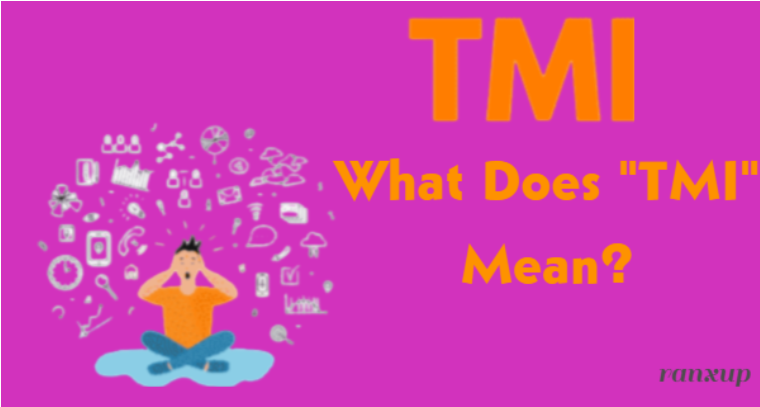In today’s digital age, text messaging has become an integral part of our daily communication. With the addition of acronyms and abbreviations, understanding the meaning behind these shorthand expressions can sometimes be a bit confusing. One such acronym you may have come across is “TMI”. In this blog post, we will explore the meaning of TMI in text and how it is commonly used in modern communication.
Definition of TMI:
TMI stands for “Too Much Information.” It is often used in text messages and online conversations to indicate that the speaker has shared more personal or intimate details than the recipient would prefer to know. In other words, TMI is a way to express discomfort or an overload of information.
Usage and Examples
Personal Details Oversharing:

Imagine a friend texting you about their recent doctor’s visit and providing explicit details about their medical condition. If you find this information excessive or uncomfortable, you can respond with “TMI!” to indicate that you feel the conversation has crossed a boundary.
Awkward Conversations:
TMI can also be used to respond to an awkward or inappropriate remark. For example, if someone shares an embarrassing story or divulges intimate details about their personal life, you can use TMI to express your discomfort or to suggest that the conversation has become too personal.
Oversharing on Social Media:
TMI is not only limited to text messages but is also commonly used on social media platforms. People often share personal updates or photos that others may consider oversharing. By commenting “TMI” on such posts, users can express their opinion that the content is too personal or inappropriate for public consumption.
Etiquette and Considerations
While TMI can be a useful acronym to set boundaries in conversations, it is essential to use it with caution and respect. Different people have different comfort levels when it comes to sharing personal information, so it’s important to be mindful of that. Always consider the context and the relationship you have with the person you’re communicating with.
Conclusion:
In the fast-paced world of texting and online communication, understanding the meaning of acronyms like TMI is crucial for effective and respectful conversations. Knowing when to draw the line and indicate that too much personal information has been shared is vital for maintaining healthy boundaries. By using TMI appropriately, you can navigate conversations with ease and ensure that all parties involved feel comfortable and respected.
FAQs:
Q: Can TMI be used in professional settings?
A: While TMI is commonly used in casual conversations, it is generally not appropriate to use in professional settings. It’s important to maintain a level of professionalism and avoid oversharing personal details in professional communication.
Q: Are there any alternative acronyms similar to TMI?
A: Yes, there are a few alternative acronyms that convey a similar meaning, such as “TML” (Too Much Information) and “TMFI” (Too Much Freaking Information). These acronyms can be used interchangeably with TMI.
Q: Is TMI only used in text messages?
A: No, TMI can be used in various forms of communication, including text messages, online chats, and even in-person conversations. It is a versatile acronym that conveys the same meaning across different platforms.
Q: How can I politely indicate TMI without using the acronym?
A: If you prefer not to use the acronym TMI, you can politely express your discomfort or indicate that the conversation has become too personal by saying something like, “I think that’s more information than I need to know” or “That’s a bit too personal for me.”

